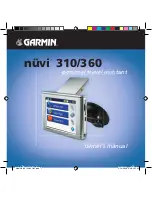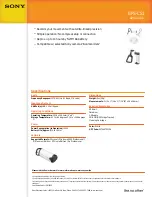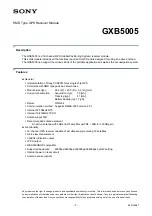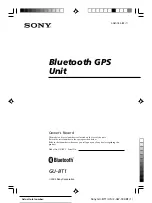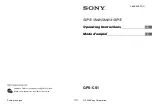
Page 3-8
GNS 400W Series Installation Manual
Rev. G
190-00356-08
3.10
Antenna Installation and Connections
3.10.1
GPS Antenna
This section provides information on the antenna cable installation. Refer to 2.4.1 herein for installation
location considerations.
NOTE
The internal 400W Series COM does not interfere with its own GPS receiver. However,
placement of the 400W Series antenna relative to other COM transceivers and antennas
(including the 400W Series COM antenna) is critical.
Suggestion:
Temporarily locate the GPS antenna with coax connected to the 400W Series unit and check
the GPS performance as described in Section 5.5.2 and Section 5.5.3. Once a suitable location has been
verified, then permanently mount the antenna.
Once the antenna mounting position has been prepared, route the coax cable from the antenna to the
400W Series unit. Proper selection of coax cable and assembly of connectors is critical to GPS signal
performance.
The cable loss from the GPS antenna shall be between 1.5 dB and 6.5 dB in order to
maintain proper rejection to interference signals.
The coaxial connectors and adapters, such as TNC to BNC, add additional loss to the cable and should be
considered when computing the cable loss. A typical loss of 0.2 dB can be used for each connection. To
maintain integrity of the WAAS signal, the GPS antenna coaxial cable must have a minimum of two
shields (e.g. RG-400 or RG-142B).
NOTE
If RG-142B or RG-400 is used, 1.5 dB equates to a length of approximately 6.5 feet of
cable with a connector on each end. RG-142B or RG-400 cable can be used as long as the
length is less than 35 feet. For longer lengths, use low-loss double or triple shielded 50
coax.
For very short runs, where the loss is less than 1.5 dB, additional cable should be used to increase the loss
to within 1.5 dB to 6.5 dB. This additional cable may be coiled, taking into account the minimum bend
radius of the cable.
During the post-installation checkout, susceptibility to harmonics of VHF COM transmitters will be
evaluated. If problems arise, then better isolation, or distance, may be required between the GPS and
COM antennas, or a 1575.42 MHz notch filter may be installed in series with the antenna coax of the VHF
COM transceiver to reduce or eliminate the harmonic interference. A notch filter for this use
(P/N 330-00067-00) is available from Garmin.
If a VHF COM transmitter causes problems with the GPS on the selected frequencies as listed in the post-
installation checkout, the problem may be due to the ELT. This can be verified by disconnecting the ELT
antenna coax at the ELT unit. If the ELT is found to cause the problem, then contact the ELT
manufacturer or replace the ELT.
Summary of Contents for GPS 400W
Page 1: ...190 00356 08 August 2012 Rev G...
Page 2: ......
Page 125: ...GNS 400W Series Installation Manual Page 6 1 190 00356 08 Rev G 6 RESERVED...
Page 133: ...GNS 400W Series Installation Manual Page B 1 190 00356 08 Rev G Appendix B RESERVED...
Page 135: ...GNS 400W Series Installation Manual Page C 1 190 00356 08 Rev G Appendix C RESERVED...
Page 155: ...GNS 400W Series Installation Manual Page G 1 190 00356 08 Rev G Appendix G RESERVED...
Page 179: ...GNS 400W Series Installation Manual Page H 23 190 00356 08 Rev G Figure H 14 Not Used...
Page 211: ......
Page 212: ......


































